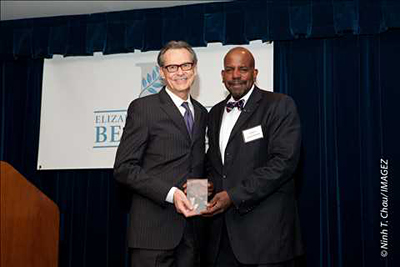I am happy to announce that Ms. Deborah Dorcemus, an IRE graduate student, was recently awarded the National Science Foundation’s prestigious LSAMP Bridge to the Doctorate Fellowship. The LSAMP program is funded by the National Science Foundation and focuses on strengthen the participation, representation and success of underrepresented minorities in the science, technology, engineering, and mathematics (STEM) fields. Fellows receive two years of funding under the program with an additional three years provided by their advisors.
After graduating high school in 2008, Deborah chose to attend the University of Connecticut for her degree in Biomedical Engineering. Throughout her four years of undergraduate work, Deborah was heavily involved with several organizations that promote the professional development and academic success of students and minorities interested in the STEM fields. Deborah also held the positions of secretary, vice president, and president of the UConn chapter of the National Society of Black Engineers.
Upon receiving her Bachelor of Science in May 2012, she decided to continue on her academic path and enrolled in UConn’s Graduate program for her Master’s Degree in Biomedical Engineering with a focus in Tissue Engineering and Regenerative Medicine. With the support of her advisor, Dr. Syam P. Nukavarapu (IRE faculty member), she is nearing completion of her first year of graduate studies. In addition to her lab and school work, Deborah volunteers with the Engineering Graduate Dean’s Office, under the supervision of Aida Ghiaei, and works with students from technical high schools who come to UConn in hopes of becoming engineers. Deborah’s thesis work involves utilizing tissue engineering strategies to develop 3D matrixes that would regenerate osteochondral (functional bone and cartilage) tissue. In order to achieve this, she will use a polymer-hydrogel matrix to deliver growth factors that would cue the tissue to a specific formation. In the end, this structure will serve to replace damaged or arthritic tissue which is an area of great need among the elderly as well as athletes.
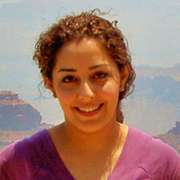 I am very excited to announce that Paiyz Mikael has been selected as one of the finalists for the 2013 Women of Innovation Awards. Every year, the Connecticut Technology Council recognizes women for their innovations, mentoring, leadership in technology, and contributions to the STEM field. These awards also include high-school and college-level students.
I am very excited to announce that Paiyz Mikael has been selected as one of the finalists for the 2013 Women of Innovation Awards. Every year, the Connecticut Technology Council recognizes women for their innovations, mentoring, leadership in technology, and contributions to the STEM field. These awards also include high-school and college-level students.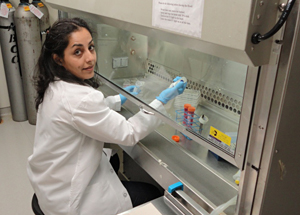

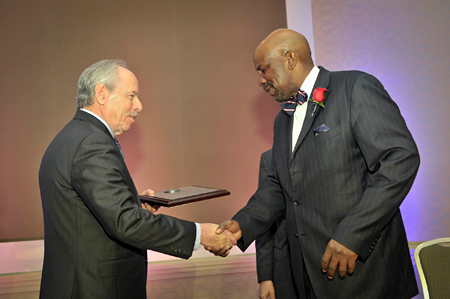
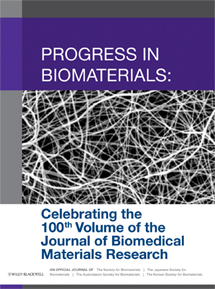 The Journal of Biomedical Materials Research (JBMR) has just published its 100th volume, Progress in Biomaterials, which features the top 25 papers it has published in its 50+ years. I am happy to report that one of our lab’s papers, “Electrospun nanofibrous structure: A novel scaffold for tissue engineering” was selected for inclusion. This article has been cited more than 1100 times. According to JBMR, the major criteria for inclusion of papers in this virtual issue was “the identification of articles that, in their time, were considered novel, original, state-of-the-art, groundbreaking, led to clinical application, and opened new areas of biomaterials research.” The editors commented “this pioneering paper by Laurencin showed that biodegradable electrospun nanofiber structures were capable of supporting cell attachment and proliferation and indicated that cells seeded on this structure could maintain phenotypic shape and guide growth according to nanofiber orientation.” Perhaps even more exciting, the editors chose figure 2 of our paper for the cover of the 100th Volume Celebration Edition.
The Journal of Biomedical Materials Research (JBMR) has just published its 100th volume, Progress in Biomaterials, which features the top 25 papers it has published in its 50+ years. I am happy to report that one of our lab’s papers, “Electrospun nanofibrous structure: A novel scaffold for tissue engineering” was selected for inclusion. This article has been cited more than 1100 times. According to JBMR, the major criteria for inclusion of papers in this virtual issue was “the identification of articles that, in their time, were considered novel, original, state-of-the-art, groundbreaking, led to clinical application, and opened new areas of biomaterials research.” The editors commented “this pioneering paper by Laurencin showed that biodegradable electrospun nanofiber structures were capable of supporting cell attachment and proliferation and indicated that cells seeded on this structure could maintain phenotypic shape and guide growth according to nanofiber orientation.” Perhaps even more exciting, the editors chose figure 2 of our paper for the cover of the 100th Volume Celebration Edition.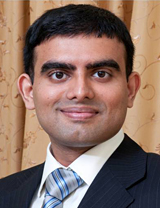 I am pleased to announce that Dr. Roshan James recently joined the Institute for Regenerative Engineering as a postdoctoral fellow. His current research focuses on the design and fabrication of novel biomaterials for musculoskeletal tissue engineering. His research interests include biomaterials, integrated tissues, and regenerative engineering.
I am pleased to announce that Dr. Roshan James recently joined the Institute for Regenerative Engineering as a postdoctoral fellow. His current research focuses on the design and fabrication of novel biomaterials for musculoskeletal tissue engineering. His research interests include biomaterials, integrated tissues, and regenerative engineering.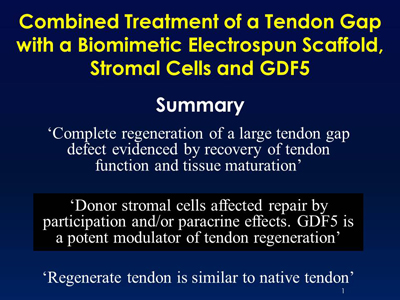 It is worth noting that Dr. James has made a significant impact on tendon tissue engineering. He has successfully developed a novel tubular scaffold system to regenerate a large gap defect in tendon tissue due to severe injuries. The scaffold system can also deliver adipose stromal cells and growth factors that facilitate the regenerative process resulting in new tendon tissue formation.
It is worth noting that Dr. James has made a significant impact on tendon tissue engineering. He has successfully developed a novel tubular scaffold system to regenerate a large gap defect in tendon tissue due to severe injuries. The scaffold system can also deliver adipose stromal cells and growth factors that facilitate the regenerative process resulting in new tendon tissue formation.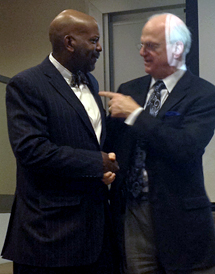 To further facilitate collaborations between UConn and internationally renowned experts, it was our great honor to host Ronald W. Rousseau, chair of the School of Chemical and Biomolecular Engineering at Georgia Institute of Technology. Dr. Rousseau, the Cecil J. “Pete” Silas Endowed Chair, delivered a talk entitled “Chirally Pure Pharmaceutical Products: The Role of Crystallization” in the Department of Chemical, Materials and Biomolecular Engineering at Storrs. His research focuses on separation processes and has resulted in more than 200 publications. Dr. Rousseau has received numerous awards including the prestigious Warren K. Lewis Award from the American Institute of Chemical Engineers (AIChE), the Clarence G. Gerhold Award from the AIChE’s Separations Division and the AIChE’s Forest Products Award. He is a fellow of both AIChE and the American Association for the Advancement of Science (AAAS). It was an honor having Dr. Rousseau at UConn, and we look forward to collaborating with him in the future.
To further facilitate collaborations between UConn and internationally renowned experts, it was our great honor to host Ronald W. Rousseau, chair of the School of Chemical and Biomolecular Engineering at Georgia Institute of Technology. Dr. Rousseau, the Cecil J. “Pete” Silas Endowed Chair, delivered a talk entitled “Chirally Pure Pharmaceutical Products: The Role of Crystallization” in the Department of Chemical, Materials and Biomolecular Engineering at Storrs. His research focuses on separation processes and has resulted in more than 200 publications. Dr. Rousseau has received numerous awards including the prestigious Warren K. Lewis Award from the American Institute of Chemical Engineers (AIChE), the Clarence G. Gerhold Award from the AIChE’s Separations Division and the AIChE’s Forest Products Award. He is a fellow of both AIChE and the American Association for the Advancement of Science (AAAS). It was an honor having Dr. Rousseau at UConn, and we look forward to collaborating with him in the future.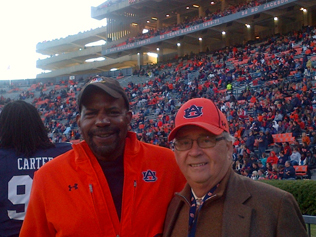 Last month, I was honored to deliver the Basore Lecture at Auburn. I appreciated the warm hospitality provided by the entire school. I want to thank Professor Mario R. Eden, Chairman of the Chemical Engineering for hosting me. During the visit, I also had the opportunity to join my friend and colleague, Dr. James Andrews a world-renowned orthopaedic surgeon on the Auburn football team sidelines.
Last month, I was honored to deliver the Basore Lecture at Auburn. I appreciated the warm hospitality provided by the entire school. I want to thank Professor Mario R. Eden, Chairman of the Chemical Engineering for hosting me. During the visit, I also had the opportunity to join my friend and colleague, Dr. James Andrews a world-renowned orthopaedic surgeon on the Auburn football team sidelines. I was proud to receive the prestigious Elizabeth Hurlock Beckman Award last month in Atlanta, Georgia. It recognizes individuals who have worked to inspire their students to be mentors themselves. I was nominated by my former student Dr. Saadiq El-Amin who is currently a professor of orthopaedic surgery at Southern Illinois University who is mentoring a new generation of students and individuals in the community. I am grateful to Dr. El-Amin and the Elizabeth Hurlock Beckman Award Advisory Committee for this award.
I was proud to receive the prestigious Elizabeth Hurlock Beckman Award last month in Atlanta, Georgia. It recognizes individuals who have worked to inspire their students to be mentors themselves. I was nominated by my former student Dr. Saadiq El-Amin who is currently a professor of orthopaedic surgery at Southern Illinois University who is mentoring a new generation of students and individuals in the community. I am grateful to Dr. El-Amin and the Elizabeth Hurlock Beckman Award Advisory Committee for this award.